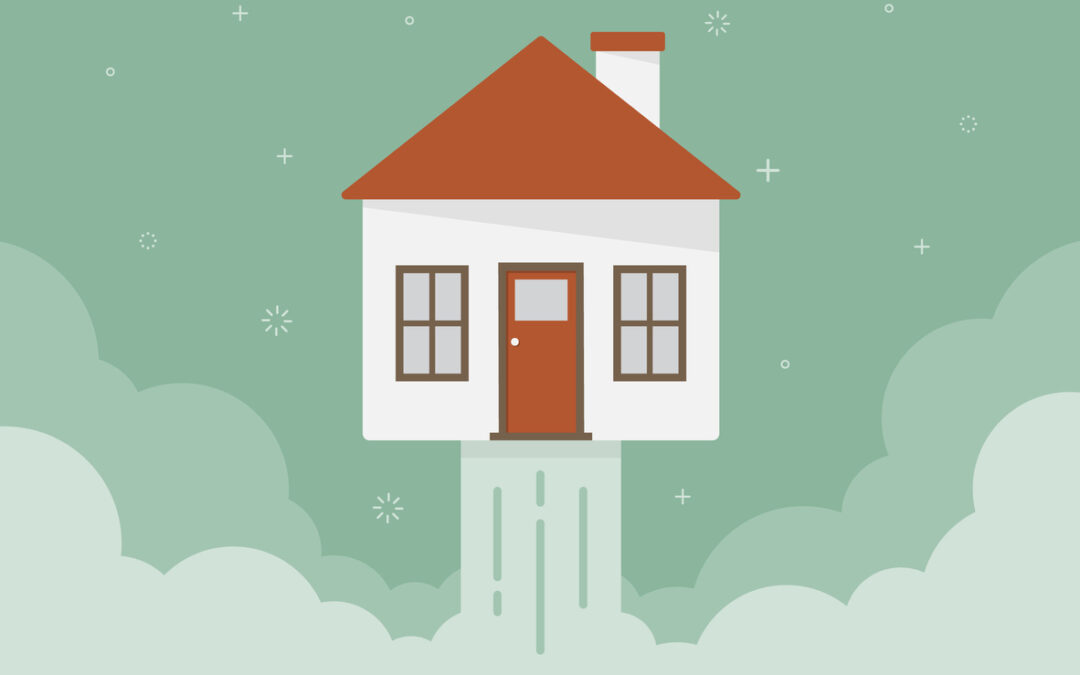Review these 6 tips to keeping homeowners insurance rates as low as possible
Buying a home is a milestone for many people, and a homeowners insurance policy provides necessary security for this investment. But a lot of people aren’t having an easy time securing either of those in 2021. Property prices are higher than ever due to low interest rates and high demand during a major housing shortage, a situation Freddie Mac projects to continue into 2022.
Those historically expensive homes still need to be insured and, unfortunately, the average cost of a policy is also increasing sharply. This trend looks like it will continue, so here’s some guidance on keeping coverage costs as low as possible.
An overview of rising home insurance prices
Home coverage premiums had been climbing for a decade. But this pace has accelerated, and homeowners paid 59% more on their premiums in 2020 than in 2010. Rising construction costs and the increasing frequency of natural disasters combined with other factors to set a national annual average cost of $1,445.
Economic forces, insurer analytics, and natural disasters that influence rates are beyond a homeowner’s control. However, there are some steps people can take to put their premiums in the best possible position.
6 tips for affordable home insurance
Some of these tips need an investment of your time. Others require spending some money to save more in the long run. But all of them may be a worthwhile step toward maximizing possible savings:
1. Take time before you sign
Shopping around is the best way to lock down the lowest possible premiums, right out of the gate. Getting off on the most affordable foot can be time-consuming, however, requiring research and comparing numerous providers.
Working with an experienced third-party home insurance team can reduce the workload. Professionals can assess your circumstances and offer no-pressure guidance toward the most affordable and effective policies based on your current situation and goals.
2. Be proactive
Insurers don’t look kindly on customers who leave themselves open to risks the provider will have to pay out for—be too careless here, and you may find yourself dropped. Homeowners should take the initiative to maintain their home’s condition from roof to basement and take steps to protect it against external threats like the elements and criminals.
Installing smoke detectors, quality locks on doors and windows, and home surveillance are three good ways to safeguard a home. Investing in a home inspection also provides a guide on where your property may need maintenance. Take these proactive steps and you may enjoy lower home insurance premiums.
3. Bundle up
Owning a home means you probably own a car, and you’ll likely be concerned with the financial well-being of any loved ones. Choosing to get different policies from the same insurer to cover two or more of those factors (auto, home, and life) is called “bundling.” And getting different coverage types from the same insurer can lead to lower insurance premiums across the board.
4. Raise your deductible
Pay more to save more? It works when it comes to home insurance. Raising your current deductible means insurance companies have to pay out less toward a claim, and that allows them to reduce the amount you pay for coverage.
The more you’re willing to spend toward rectifying house damage or theft, the more you can save on monthly premiums. A ValuePenguin study found that increasing a deductible from $500 to $1,000 could save as much as 13% annually. An insurance advisor can help you budget effectively (and wisely) for this trade-off, assessing whether it makes sense for your situation.
5. Improve your credit score
Start by checking your credit score and seeing if it’s good, accurate, or requires correction in either case. Try applying these tips if it needs improvement. A healthy credit score can contribute to more affordable home insurance rates.
A good credit rating shows insurers that the individual budgets well and is prepared for future expenses. A bad one telegraphs a careless attitude toward the future that makes someone seem more likely to need an eventual claim. The likely result? Higher premiums.
Credit is a factor that almost all insurers will look at, but how much they let it impact premiums varies. Nevertheless, a good credit score is an asset when shopping around with every provider.
6. Understand depreciation
Almost everything in your home and parked or stored outside is going to lower in value as time passes. That very expensive TV or family car won’t be worth as much next year as when you bought it. This means that aspects of your home insurance designed to cover the replacement cost of these items may decrease, too.
It’s a subtle potential discount that many homeowners miss. Start by inventorying your possessions (which is also very helpful in the event of a claim), as this will give you a starting point to keep tabs on how much they’re worth in the future. The less they cost to replace, the less you may pay on certain elements of home insurance.
These tips are a great place to start saving. But in the face of escalating costs, there are more than six routes toward cheaper home insurance. Give NICRIS a call for the complete list of what could help lower your premiums.
The NICRIS team is here to provide coverage that help makes the future secure and more affordable. You can contact us for a free, personalized review or ask any home insurance questions by dropping us a line.

